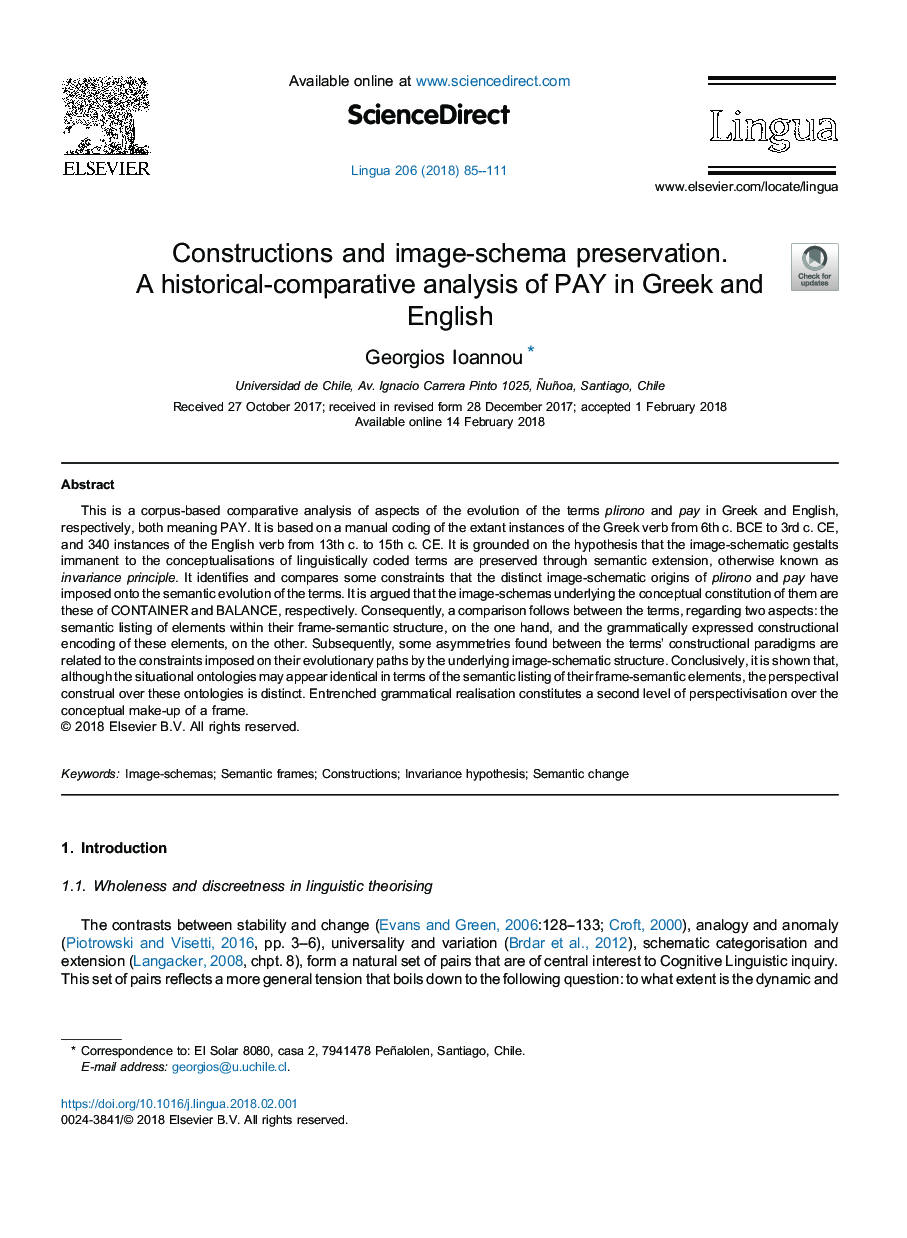| Article ID | Journal | Published Year | Pages | File Type |
|---|---|---|---|---|
| 7298368 | Lingua | 2018 | 27 Pages |
Abstract
This is a corpus-based comparative analysis of aspects of the evolution of the terms plirono and pay in Greek and English, respectively, both meaning PAY. It is based on a manual coding of the extant instances of the Greek verb from 6th c. BCE to 3rd c. CE, and 340 instances of the English verb from 13th c. to 15th c. CE. It is grounded on the hypothesis that the image-schematic gestalts immanent to the conceptualisations of linguistically coded terms are preserved through semantic extension, otherwise known as invariance principle. It identifies and compares some constraints that the distinct image-schematic origins of plirono and pay have imposed onto the semantic evolution of the terms. It is argued that the image-schemas underlying the conceptual constitution of them are these of CONTAINER and BALANCE, respectively. Consequently, a comparison follows between the terms, regarding two aspects: the semantic listing of elements within their frame-semantic structure, on the one hand, and the grammatically expressed constructional encoding of these elements, on the other. Subsequently, some asymmetries found between the terms' constructional paradigms are related to the constraints imposed on their evolutionary paths by the underlying image-schematic structure. Conclusively, it is shown that, although the situational ontologies may appear identical in terms of the semantic listing of their frame-semantic elements, the perspectival construal over these ontologies is distinct. Entrenched grammatical realisation constitutes a second level of perspectivisation over the conceptual make-up of a frame.
Keywords
Related Topics
Social Sciences and Humanities
Arts and Humanities
Language and Linguistics
Authors
Georgios Ioannou,
